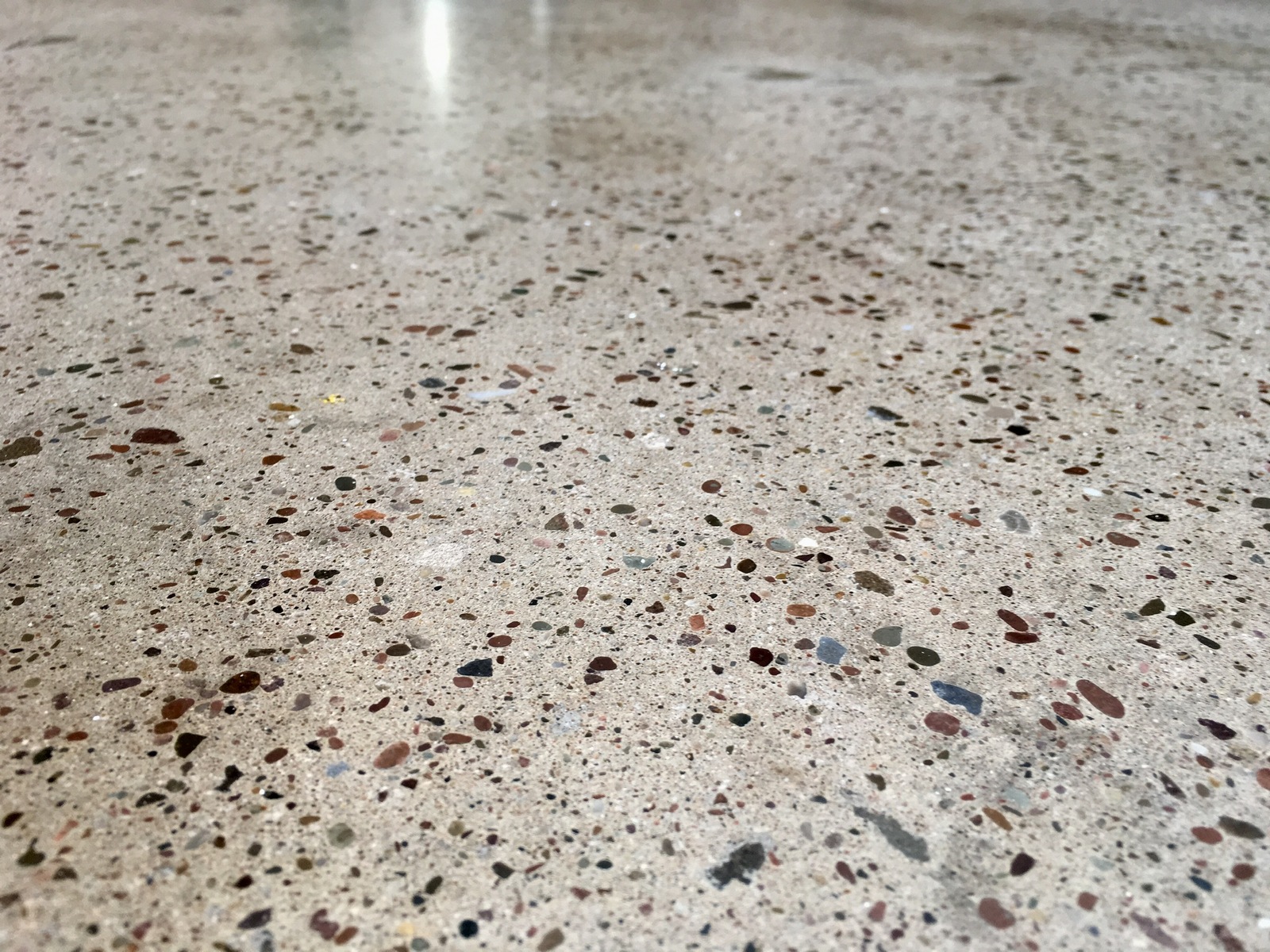Polished concrete floors have gained widespread popularity in commercial and industrial settings due to their durability, aesthetic appeal, and low maintenance requirements. But what exactly goes into creating these smooth, reflective surfaces? Understanding the science behind polished concrete involves delving into the materials, techniques, and technology used in the polishing process. In this article, we will explore the intricate steps and advanced methods that transform a basic concrete slab into a polished, high-performance flooring solution.
The Basics of Concrete
Concrete is a composite material composed of cement, water, and aggregates (such as sand, gravel, or crushed stone). When these ingredients are mixed together, they form a paste that binds the aggregates into a solid, stone-like material. The quality and characteristics of the concrete depend on the proportions of these ingredients and the conditions under which it is cured.
The Polishing Process: Step-by-Step
- Surface Preparation:
- The first step in polishing concrete is to prepare the surface. This involves cleaning the concrete to remove any dirt, oil, or contaminants. Any existing coatings or sealants must be stripped away to ensure the polishing process can penetrate the concrete surface effectively.
- Cracks and holes are repaired using patching compounds to create a smooth and even surface.
- Grinding:
- Grinding is the initial phase of the polishing process. Heavy-duty grinding machines equipped with diamond-impregnated segments (called diamond tooling) are used to grind down the concrete surface. This step removes any imperfections and exposes the aggregate.
- The grinding process typically involves multiple passes with increasingly finer grit diamond tooling. This gradual refinement smooths the surface and prepares it for the next stages of polishing.
- Densification:
- Once the surface has been ground to the desired level, a liquid chemical hardener (densifier) is applied. This chemical reacts with the calcium hydroxide in the concrete to form calcium silicate hydrate, which fills the pores and increases the surface density.
- Densification strengthens the concrete, making it more resistant to wear and providing a harder, more durable surface for polishing.
- Polishing:
- The polishing phase involves using progressively finer diamond polishing pads to achieve a smooth, glossy finish. The process starts with coarse-grit pads and progresses to finer-grit pads, much like sanding wood.
- Each successive pass with a finer grit further refines the surface, enhancing its smoothness and shine. The number of passes and the grit sequence depend on the desired level of sheen, ranging from a matte finish to a high-gloss, mirror-like appearance.
- Stain and Colour Application (Optional):
- If a decorative look is desired, stains or dyes can be applied during the polishing process. These can add colour and depth to the concrete, creating custom designs and patterns that enhance the overall aesthetic.
- The stains penetrate the concrete and are sealed in during the final stages of polishing.
- Sealing and Protection:
- After achieving the desired polish, a sealer is applied to protect the surface from stains, chemicals, and abrasion. The sealer enhances the polished finish and provides an additional layer of durability.
- Depending on the environment and usage, various types of sealers can be used, including penetrating sealers, topical sealers, and guards.
Advanced technology in Concrete Polishing
Modern concrete polishing has been revolutionised by advancements in technology. Here are some key innovations:
- Diamond Tooling: The development of diamond-impregnated tooling has allowed for more efficient and effective grinding and polishing. These tools come in various shapes and sizes, designed to optimise the polishing process for different concrete conditions.
- High-Tech Grinders: Advanced grinding machines now feature sophisticated controls and sensors that enhance precision and efficiency. Some models are equipped with dust extraction systems to minimise airborne particles and improve the working environment.
- Chemical Densifiers: Innovations in densifier formulations have improved their effectiveness, allowing for deeper penetration and better surface hardening.
The Art and Science of Polished Concrete
Commercial polished concrete floors are the result of a meticulous process that combines art and science. Understanding the materials, techniques, and technology involved in creating these durable, aesthetically pleasing surfaces highlights the skill and expertise required to achieve the perfect finish. By investing in polished concrete, businesses can enjoy a high-performance flooring solution that stands the test of time, offering both functional benefits and visual appeal.
Do you have a commercial or premise in the Gloucestershire region that we can help with? Our team are ready work on any Polished Concrete Floors Gloucestershire so please get in touch to enquire about our services.


